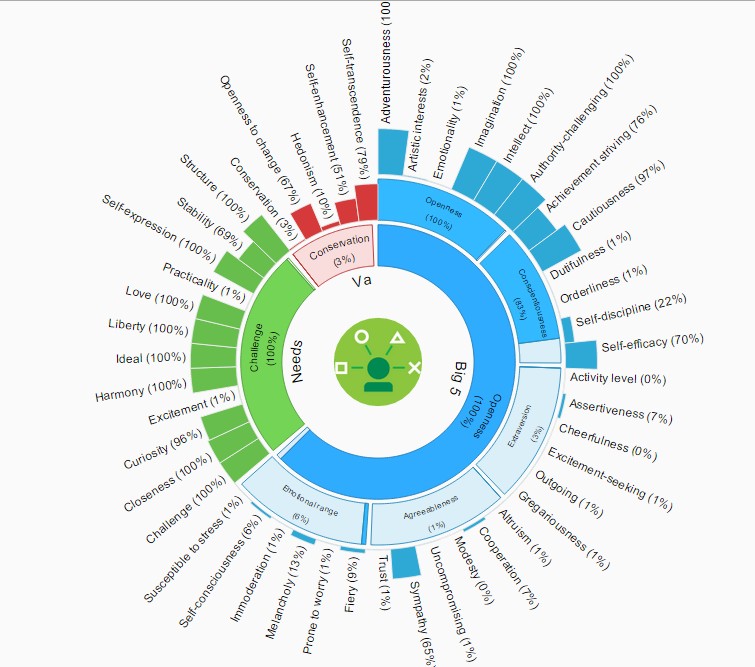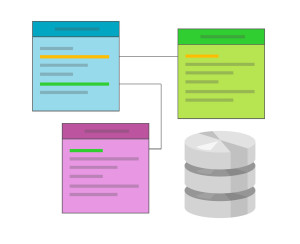Key Takeaways
- IBM’s Watson Developer Cloud offers a collection of Web APIs that allow web developers to leverage Watson’s cognitive capabilities in their web applications, without needing to understand anything about machine learning.
- The Watson Developer Cloud provides 13 services including Personality Insights, Visual Recognition, and Question and Answer service. These services are designed to analyze and interpret data from various sources, providing insights and solutions for businesses and individuals.
- IBM has made Watson’s APIs freely available to developers, encouraging the development of smarter, cognitive applications. This marks a significant step forward in the integration of artificial intelligence and natural language processing services with web applications.
IBM made its debut in the artificial intelligence field several years ago with Watson, an artificial intelligence computer system that can answer questions posed in natural language.
Watson now includes a collection of Web APIs that enable web developers to leverage Watson’s cognitive capabilities in their web applications. These REST APIs are publicly available through IBM’s Bluemix cloud services platform, dubbed the Watson Developer Cloud.

IBM’s CTO for Watson, Rob High, has been quoted as saying that developers can utilize these APIs without needing to understand anything about machine learning.
Demo Apps at the Developer Cloud
Personality Insights Demonstration
The IBM Watson Personality Insights service provides an API that enables applications to derive insights from social media, enterprise data or from digital communications.
Watson gives the personality insights in the form of percentages of what’s known as the “Big Five”. These are the human characteristics of Openness, Conscientiousness, Extraversion, Emotional Range, and Agreeableness. Other than the Big Five, it also gives some insights into the Needs and Values of a person’s personality.
Their website suggests that –
These insights help businesses to understand their clients’ preferences and improve customer satisfaction by anticipating customer needs and recommending future actions. This allows businesses to improve client acquisition, retention, and engagement, and to strengthen relations with their clients.
It also provides a beautiful visualization of its results in the form of a chart, created with the help of D3.js:

Its documentation is available here, its REST API can be accessed from here, and you can hack on the code by forking this GitHub repository.
Question and Answer
The Watson Question and Answer service interprets and answers questions related to the Travel and Health industries by obtaining meaningful information based on primary data sources (brochures, web pages, manuals, records, and so on).
Each answer has an associated confidence level, and it links to supporting evidence for the answer. This application is currently in Beta, since it hasn’t been trained currently through machine learning.
Its documentation is available here, and you can hack on the code by forking this GitHub repository.
Visual Recognition
The IBM Watson Visual Recognition service provides an API that enables a user to analyze images or video frames to understand their contents.
We decided to test the application, and provided an image from Wikipedia as input in the landmarks category:

And Watson gave the following output in less than 8 seconds!

The Visual Recognition documentation is available here, its REST API can be accessed from here and you can hack on the code by forking this GitHub repository.
13 Services Currently Offered by IBM
- Personality Insights
enables deeper understanding of people’s personality characteristics, needs, and values to help engage users on their own terms. - Concept Insights
explores information based on the concepts behind your input, rather than limiting investigation to findings based on traditional text matching. - Concept Expansion
maps euphemisms or colloquial terms to more commonly understood phrases. - Language Identification
identifies the language in which text is written. - Machine Translation
converts text input in one language into a destination language for the end user. - Message Resonance
facilitates communication with people in a style and in words that suit them. - Question and Answer
interprets and answers user questions directly, based on primary data sources. - Relationship Extraction
intelligently finds relationships between sentence components (nouns, verbs, subjects, objects, etc.). - Speech to Text
transcribes English speech to text with low latency. - Text to Speech
synthesizes natural-sounding speech from English or Spanish text. - Tradeoff Analytics
helps people optimize their decisions, while striking a balance between multiple – often conflicting – objectives. - Visual Recognition
analyzes the visual content of images and video frames to understand the content directly, without the need for a textual description. - Visualization Rendering
provides graphical representations of data analysis for easier understanding.
Conclusion
IBM has taken a pleasing step by making Watson’s APIs freely available to developers, enabling them to make their applications cognitive and smarter. Hopefully, over time, more machine learning and natural language processing services like this will become freely available for developers. If they could be open-source, too, that would be icing on the cake!
Various individuals and organizations are currently developing natural language processing solutions such as Siri, Google Now, Cortana, Jasper and Sirius. The ability to integrate such services with web applications would be an extra bonus, ushering in a new era of speech interaction with web services, and freeing us a little more from the mouse and keyboard!
So, what do you think of Watson’s new APIs? Have you tried them yet? If not, can you envisage what you might be using them for one day?
Frequently Asked Questions about IBM Watson Developer Cloud
What is IBM Watson Developer Cloud?
IBM Watson Developer Cloud is a suite of powerful cognitive computing technologies and artificial intelligence (AI) APIs that developers can use to build applications, products, and services. It includes a range of services for text analysis, speech recognition, visual recognition, and machine learning, among others. These services are designed to be easy to use and integrate, enabling developers to create intelligent applications without needing a deep understanding of AI or data science.
How can I get started with IBM Watson Developer Cloud?
To get started with IBM Watson Developer Cloud, you first need to create an IBM Cloud account. Once you have an account, you can access the Watson services through the IBM Cloud catalog. Each service has its own documentation and API reference to help you understand how to use it. You can also find sample code and tutorials on the IBM Watson Developer Cloud GitHub page.
What programming languages are supported by IBM Watson Developer Cloud?
IBM Watson Developer Cloud supports a variety of programming languages. These include Java, Node.js, Python, and Swift. The Watson SDKs for these languages make it easy to call Watson services from your code. You can find the SDKs on the IBM Watson Developer Cloud GitHub page.
What are some use cases for IBM Watson Developer Cloud?
IBM Watson Developer Cloud can be used in a wide range of applications. For example, you can use the Speech to Text service to transcribe audio files, the Visual Recognition service to analyze images, or the Natural Language Understanding service to extract insights from text. Watson services can also be combined to create more complex applications, such as chatbots or virtual assistants.
How is data privacy handled in IBM Watson Developer Cloud?
IBM Watson Developer Cloud is designed with a strong focus on data privacy. IBM does not use customer data sent via the Watson APIs to improve its models. Additionally, IBM provides robust security measures to protect data, including encryption in transit and at rest.
How can I troubleshoot issues with IBM Watson Developer Cloud?
If you encounter issues while using IBM Watson Developer Cloud, you can refer to the documentation and API references for each service. You can also check the IBM Cloud status page for any ongoing incidents. If you need further assistance, you can contact IBM support or post a question on the IBM Developer forums.
Can I use IBM Watson Developer Cloud for free?
Yes, IBM Watson Developer Cloud offers a Lite plan for each service, which allows you to use the service for free up to a certain usage limit. If you need more resources, you can upgrade to a paid plan.
What is the difference between IBM Watson Developer Cloud and IBM Watson?
IBM Watson is a broader term that refers to IBM’s suite of AI technologies and applications. IBM Watson Developer Cloud, on the other hand, specifically refers to the cloud-based APIs and services that developers can use to build applications.
How can I learn more about IBM Watson Developer Cloud?
You can learn more about IBM Watson Developer Cloud by exploring the documentation and API references for each service. You can also find tutorials, sample code, and other learning resources on the IBM Watson Developer Cloud GitHub page.
Can I use IBM Watson Developer Cloud with other IBM Cloud services?
Yes, IBM Watson Developer Cloud services can be used in conjunction with other IBM Cloud services. For example, you can use IBM Cloud Functions to trigger actions based on Watson service outputs, or you can use IBM Cloud Object Storage to store data processed by Watson services.
Tanay Pant is an Indian author, hacker, developer and tech enthusiast. He is known for his work on Learning Firefox OS Application Development, which was published by Packt. He is also an official representative of Mozilla, and has been listed in the about:credits of the Firefox web browser. His personal website is tanaypant.com.




